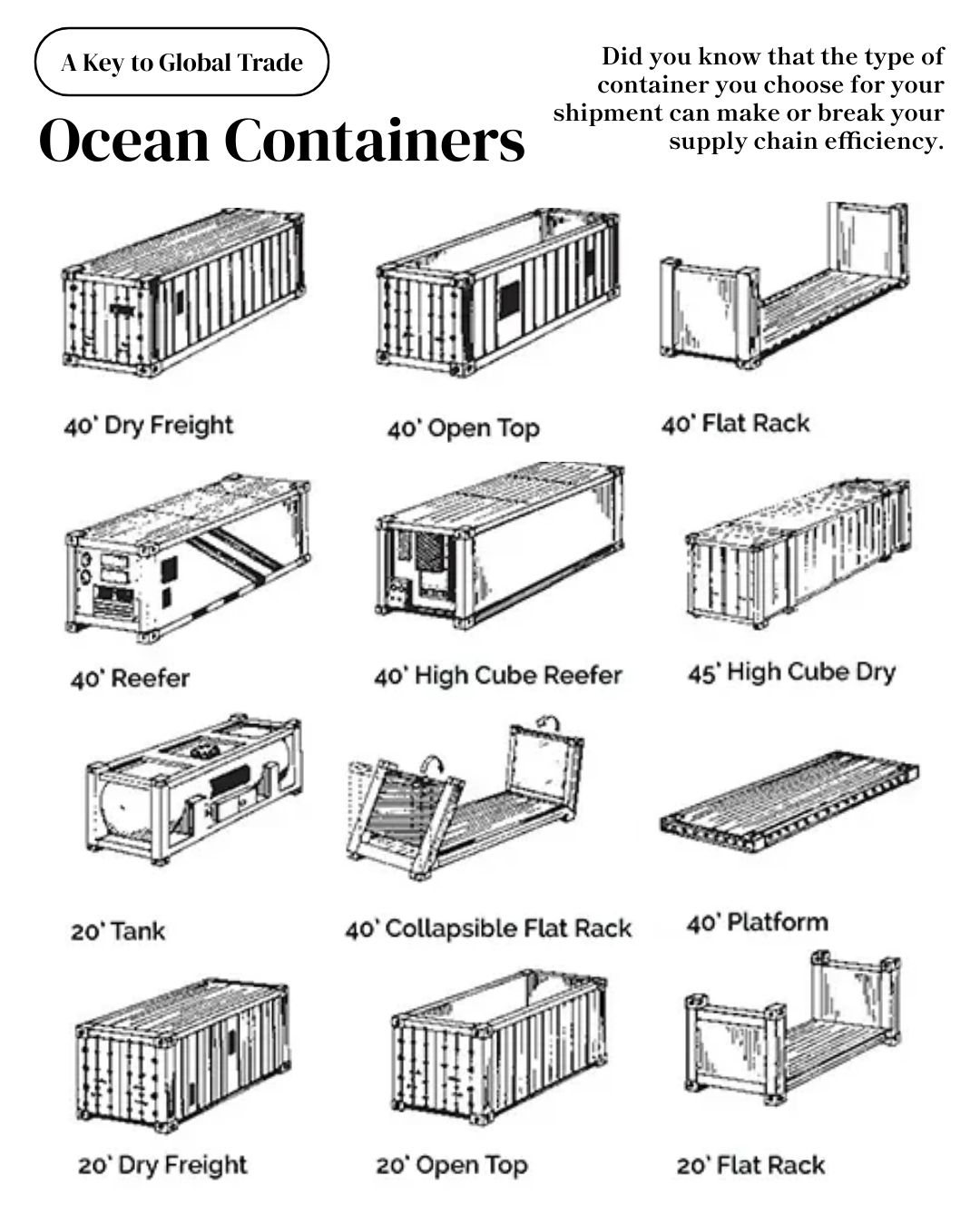In today’s global trade landscape, selecting the right shipping container is crucial for supply chain efficiency. This comprehensive guide explores the various types of ocean containers available and their optimal uses in international shipping.
Types of Ocean Shipping Containers and Their Applications
High-Capacity Containers
45′ High Cube Dry Container
- Key Feature: Extended height for maximum space utilization
- Best For: Voluminous cargo requiring additional vertical clearance
- Common Uses: Lightweight, bulky merchandise and oversized items
- Advantages: Optimized loading capacity for high-volume shipments
40′ Dry Freight Container
- Primary Use: Standard international shipping
- Ideal For: General merchandise, manufactured goods, electronics
- Benefits: Versatile storage and transportation solution
- Industry Standard: Most commonly used container type worldwide
Specialized Containers
40′ Open Top Container
- Unique Feature: Removable roof for vertical loading
- Perfect For: Tall equipment and machinery
- Loading Method: Crane or top-loading capability
- Applications: Construction equipment, large machinery
40′ Flat Rack Container
- Design: No walls or roof
- Specialized For: Oversized cargo, vehicles, boats
- Flexibility: Easy side and top loading
- Strength: Reinforced floor for heavy loads
40′ Collapsible Flat Rack
- Innovation: Foldable design
- Space Efficiency: Collapsible when empty
- Cost Benefit: Reduced storage costs
- Usage: Large industrial equipment, construction materials
Temperature-Controlled Solutions
40′ Reefer Container
- Technology: Built-in refrigeration
- Temperature Range: Controllable climate settings
- Primary Use: Perishable goods transportation
- Industries: Food, pharmaceuticals, chemicals
40′ High Cube Reefer
- Advantage: Extra height with temperature control
- Capacity: Increased volume for refrigerated cargo
- Efficiency: Maximized cold storage space
- Applications: Large perishable shipments
Compact Solutions
20′ Dry Freight Container
- Size Benefit: Smaller footprint
- Weight Capacity: Ideal for dense cargo
- Cost-Effective: Perfect for smaller shipments
- Versatility: Easier handling in tight spaces
20′ Open Top Container
- Access: Top loading capability
- Scale: Compact version of 40′ open top
- Usage: Small but tall cargo items
- Flexibility: Various loading options
20′ Flat Rack
- Design: Compact platform with end walls
- Strength: High weight capacity
- Applications: Small machinery, heavy equipment
- Advantage: Easy access from all sides
20′ Tank Container
- Purpose: Liquid cargo transportation
- Safety: Reinforced design for hazardous materials
- Contents: Chemicals, oils, beverages
- Features: Specialized filling and discharge systems
Strategic Container Selection
Choosing the right container type is crucial for:
- Maximizing cargo protection
- Optimizing shipping costs
- Ensuring efficient handling
- Meeting specific cargo requirements
Impact on Supply Chain Efficiency
The right container choice affects:
- Loading/unloading time
- Transportation costs
- Cargo security
- Overall logistics efficiency
Best Practices for Container Selection
Consider these factors:
- Cargo dimensions and weight
- Environmental requirements
- Loading/unloading methods
- Transportation regulations
- Cost considerations
Conclusion
Understanding container types and their applications is essential for successful international shipping. The right choice optimizes costs, ensures cargo safety, and maintains supply chain efficiency in global trade operations.
Keywords:
shipping containers, ocean freight, international shipping, cargo containers, supply chain logistics, container types, global trade, maritime shipping, freight transportation, logistics solutions
Haitun: HK-based NVOCC offering innovative shipping solutions for customer satisfaction and efficiency.


